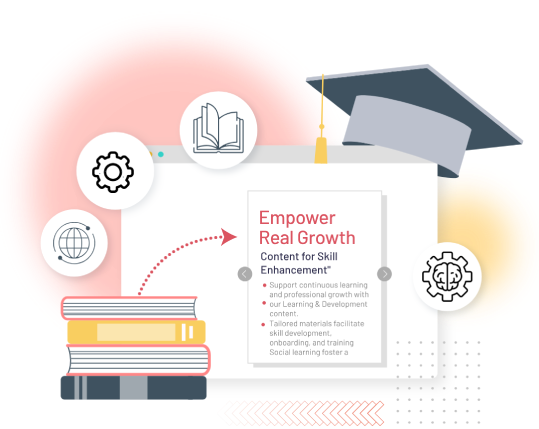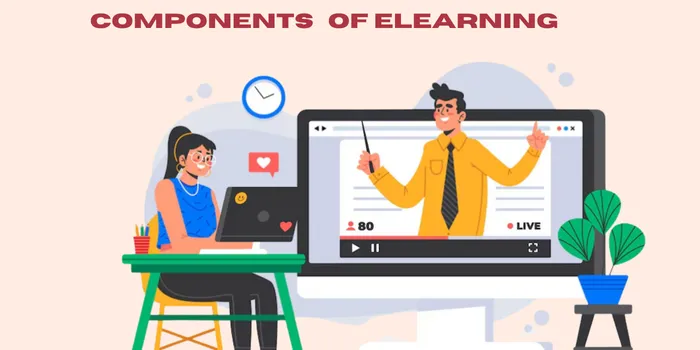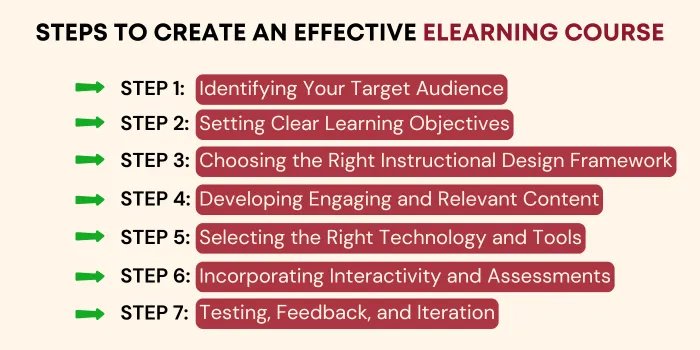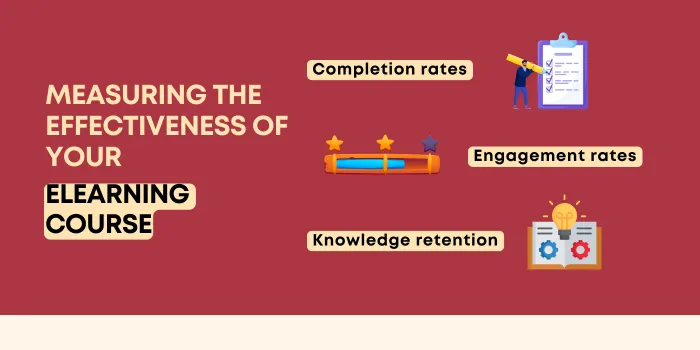

eLearning has evolved from a niche sector to a central player in global education and training. With the advent of digital transformation, businesses, educational institutions, and even governments are investing in eLearning as a way to deliver high-quality content to learners across diverse geographies.
In India, a growing tech-savvy population and an increasingly mobile-first approach to education are making eLearning solutions more crucial than ever. However, the success of an eLearning course isn’t just about choosing the right platform or technology.
It’s about creating a well-designed, engaging, and learner-centered course that leads to real learning outcomes. Businesses in the eLearning industry need to know how to craft courses that are not only relevant but also scalable and adaptable to different learning styles.
In this blog, we will break down the process of building an effective eLearning course from scratch, focusing on key areas such as instructional design, content development, technology selection, and learner engagement strategies.

At its essence, eLearning represents a paradigm shift in how education and training are delivered. Unlike traditional methods bound by geography and physical infrastructure, eLearning transcends borders, enabling access to education anytime, anywhere.
For businesses, this flexibility is not merely a convenience—it’s an opportunity. By delivering training and educational content electronically, organizations can reach wider audiences, reduce costs associated with in-person training, and scale their programs without limits.
Consider India’s dynamic landscape: from urban learners seeking upskilling opportunities to rural communities accessing quality education via mobile devices, eLearning bridges gaps that conventional methods could never address.
The beauty of eLearning lies in its adaptability. It accommodates different learning styles—whether learners prefer reading, watching videos, or engaging with interactive elements. By integrating multimedia formats, businesses can create an immersive experience that fosters retention and application. But remember, technology is the enabler, not the solution.
The real challenge lies in ensuring that the eLearning experience is purposeful and outcome-driven. Businesses must focus not only on delivering information but on creating experiences that inspire action and change.
Before we go into the step-by-step process, it’s important to establish a solid understanding of the two core components of eLearning:.
Imagine constructing a skyscraper without a blueprint. The result would be chaos. The same applies to eLearning courses—without instructional design, courses lack structure, coherence, and purpose. Instructional Design (ID) is the foundation upon which successful eLearning programs are built.
Instructional design is about aligning the course content with the learners’ goals and needs. It ensures that every piece of information, activity, and assessment contributes to the desired learning outcomes. In an industry like eLearning, where competition is fierce, businesses cannot afford to develop content that feels fragmented or irrelevant. This is where instructional design makes all the difference.
Instructional designers must consider cognitive load theory. Too much information overwhelms learners; too little leaves them disengaged. A well-designed course strikes the perfect balance, sequencing content to build knowledge progressively.
For businesses, this means investing in experts who understand the science behind learning. By doing so, they ensure their courses not only educate but transform how learners think, work, and grow.
While instructional design provides the framework, content development breathes life into the course. The content is what learners interact with—be it videos, text, graphics, or interactive modules. It’s the element that informs, engages, and ultimately determines the success of an eLearning program.
In India, where learners come from diverse linguistic and cultural backgrounds, content development takes on an added layer of complexity. Businesses must ensure their content is not only accurate and informative but also inclusive and relatable. Localization becomes key. For instance:
Content development must also embrace the principles of microlearning—breaking down information into digestible, bite-sized modules. Research shows that learners retain more when content is presented in short bursts rather than overwhelming them with lengthy sessions. For businesses, this approach aligns with the fast-paced lifestyles of today’s learners, especially in urban India.
|
Looking for help with developing microlearning content? Check out LexiConn’s microlearning content creation service! |

Let’s walk through the essential steps that will guide you in creating an impactful eLearning course from scratch.
The first and most critical step is understanding who your learners are. Are they students, corporate professionals, or hobbyists looking to upskill? In India, the diversity in learners’ demographics, backgrounds, and goals means that there is no one-size-fits-all solution. You need to tailor your course to fit the specific needs of your audience.
Key questions to ask:
Understanding your learners’ needs helps define the direction of your course and ensures that you can design content that resonates with them.
Once you know who your learners are, the next step is to set clear and measurable learning objectives. These objectives provide a roadmap for the entire course, guiding both the instructional design and content development phases.
The SMART framework is an excellent approach to setting learning objectives:
Example: Instead of a vague objective like "Understand basic computer skills," a SMART objective would be: “By the end of the course, learners will be able to use Microsoft Word to create, format, and edit documents with 90% accuracy within 45 minutes.”
Instructional design frameworks offer a structured approach to course creation. The two most widely used models are:
Depending on the complexity of your course, you can select a model that suits your needs. For example, a corporate training module for soft skills might use the ADDIE model for its systematic approach, while a coding course might benefit from the SAM model’s iterative testing and prototyping.
Content development is where your course starts to take shape. Good content is not only informative but also engaging and easy to digest. We’ve talked about microlearning. However, there are a few other strategies to consider:
Scenario-based learning (SBL) transforms theoretical knowledge into practical skills by immersing learners in real-world situations. This method leverages problem-solving exercises, decision-making tasks, and interactive scenarios that mirror challenges learners might face in their jobs or daily lives.
|
For example, in a customer service training module, learners could be presented with a simulated irate customer situation, requiring them to choose the best response from multiple options. |
The value of SBL lies in its ability to make learning actionable. By situating learners in relatable contexts, it not only deepens their understanding but also equips them to apply concepts effectively in their roles. For businesses in the eLearning industry, SBL ensures that learners remain engaged and develop practical skills that translate into improved workplace performance.
India’s cultural and linguistic diversity makes localization a critical component of effective eLearning. Tailoring content to resonate with regional audiences ensures broader reach and better engagement. This involves integrating local languages, culturally relevant examples, and familiar imagery into course content.
|
Example: Instead of generic global references, a course for Indian learners might use cricket analogies, Bollywood references, or relatable workplace scenarios. In multilingual regions, offering courses in languages such as Hindi, Tamil, or Bengali alongside English enhances accessibility and inclusivity. |
Consider a course aimed at upskilling IT professionals in India: using terms like "agile methodologies," and incorporating case studies from India’s tech hubs like Bengaluru or Hyderabad makes the content both relevant and relatable.
Additionally, addressing cultural nuances—such as hierarchical decision-making processes prevalent in Indian workplaces—can make courses more impactful.
Choosing the right tools and technologies is critical for delivering a seamless learning experience. Some key technologies include:
Additionally, given India’s diverse technological landscape, ensure that your eLearning content is mobile-friendly. With an increasing number of learners accessing content through smartphones, a mobile-responsive course can make a huge difference.
Engagement is crucial for maintaining learner interest. Incorporate interactive elements like:
Additionally, assessments such as formative (ongoing quizzes) and summative (final exams) allow you to measure knowledge retention and course effectiveness.
Before rolling out your eLearning course to a broader audience, test it with a small group of learners. Collect feedback on the course structure, content quality, interactivity, and user interface. Iterate based on this feedback to make improvements.
To ensure your course is meeting its goals, it's important to track learner performance and engagement. Use LMS analytics to monitor metrics like:

Completion rates reveal whether learners are motivated to finish the course or if they’re dropping out midway. A low completion rate might indicate issues like overly long modules, lack of engagement, or unclear objectives. Regularly reviewing these rates helps identify bottlenecks and optimize course structure to improve learner satisfaction and outcomes.
Engagement ratesEngagement rates measure how actively learners interact with the course, such as participating in quizzes, clicking through interactive elements, or revisiting content. High engagement indicates that the course is holding their attention, while low engagement might signal that the content is too static, lengthy, or not relatable. Enhancing interactivity and relevance can significantly boost engagement.
Knowledge retentionKnowledge retention evaluates whether learners can recall and apply the information post-course. This can be assessed through periodic quizzes, post-training assessments, or real-world tasks. If retention rates are low, it could point to ineffective content delivery or insufficient reinforcement. Incorporating spaced repetition and scenario-based learning can help improve retention.
Want to check your content’s health score? Get in touch with us!

In the process of developing eLearning courses, challenges such as content overload, limited budgets, and technological constraints may arise. However, these challenges can be overcome with strategic planning:
LexiConn stands out as a partner for creating impactful and engaging eLearning content tailored to your business needs. With expertise in content strategy, instructional design, and digital delivery, we provide end-to-end solutions to craft courses that inspire, inform, and deliver results. Here’s how we can help:
Creating an effective eLearning course requires a thoughtful combination of instructional design, content development, and the right technological tools. As the eLearning industry continues to grow in India, businesses must focus on creating courses that are not only educational but also engaging and accessible to a diverse learner base. With a clear understanding of the process, companies can develop impactful eLearning solutions that address real business needs and enhance learning outcomes.
Reach out to LexiConn and book a 30-minute free discovery call!



I have read and accept the Privacy Policy
Read More